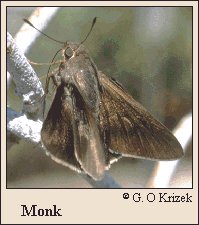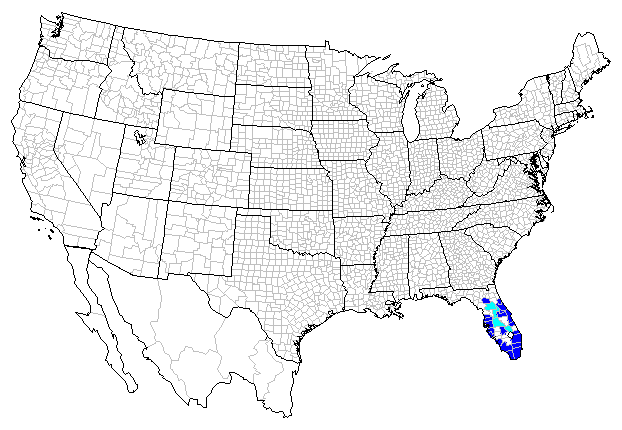 |
 

 |



Monk (Asbolis capucinus [Lucas])
Wing span: 1 7/8 - 2 3/8 inches (4.8 - 6 cm).
Identification: Upperside of male is black; forewing with a gray stigma. Upperside of female is a paler brownish black with a pale diffuse patch on the forewing. Underside of both sexes is mahogany red and black.
Life history: Not reported.
Flight: Three to four broods throughout the year in Florida.
Caterpillar hosts: Various palms including palmetto (Sabal), date palm (Phoenix dactylifera), and coconut (Cocos nucifera).
Adult food: Nectar from hibiscus and other large flowers.
Habitat: Subtropical disturbed or natural areas near palms.
Range: Peninsular Florida, the Keys, and the West Indies.
Conservation: Not usually required.
The Nature Conservancy Global Rank: G4 - Apparently secure globally, though it might be quite rare in parts of its range, especially at the periphery.
Management needs: None reported.
References:
Opler, P. A. and G. O. Krizek. 1984. Butterflies east of the Great Plains. Johns
Hopkins University Press, Baltimore. 294 pages, 54 color plates.
Opler, P. A. and V. Malikul. 1992. A field guide to eastern butterflies. Peterson
field guide #4. Houghton-Mifflin Co., Boston. 396 pages, 48 color plates.
Scott, J. A. 1986. The butterflies of North America. Stanford University Press,
Stanford, Calif. 583 pages, 64 color plates.
Author: Jane M. Struttmann

